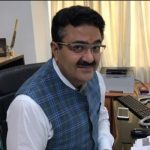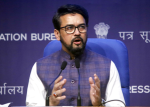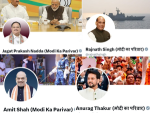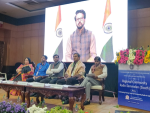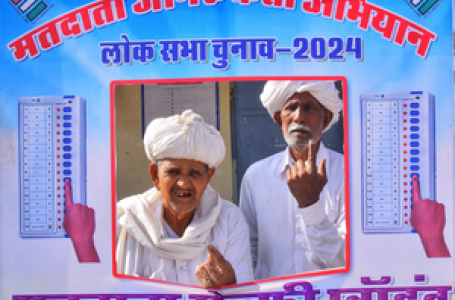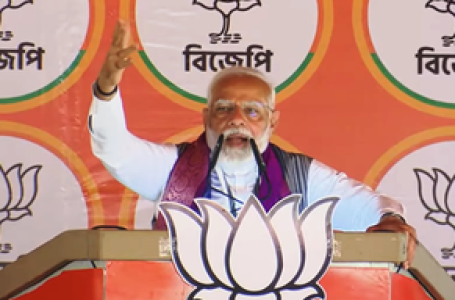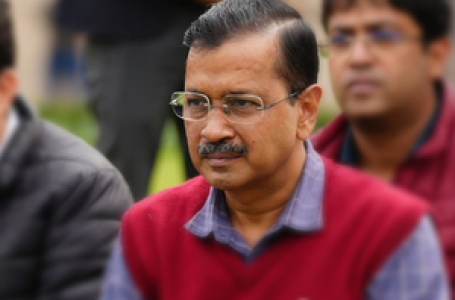
Representational image.
Undeniably, the Supreme Court of India has played a major role by specifically stating that “criticism” of government cannot justify government’s decision to revoke license of a TV channel. Criticism of the government cannot be construed as anti-national or anti-establishment. Led by Chief Justice DY Chandrachud, apex court recently scrapped an order of Ministry of Information and Broadcast which had refused to renew MediaOne channel’s broadcast license on ground of security clearance. The apex court overruled order of Kerala High Court which had upheld centre’s decision, taking strong note of Home Ministry’s claims of national security. “National security can’t be raised to deny people their rights… it was raised by the Home Ministry in a cavalier manner in this case,” the apex court stated. The strong line drawn by the apex court bench between national security and criticism of government is probably the most important point of this verdict. The centre’s decision – refusal to renew MediaOne’s license – was cancelled by Supreme Court on April 5. With an independent press essential for a vibrant democracy, the court observed that government cannot be permitted to have a stand that press must support the government.
In other words, Indian media cannot be taken for granted. This verdict demands deliberation on “independence” of media with specific reference to democratic credibility which is supposed to be respected as well as adhered to by the government, media, judiciary as well as people. Media is also known as the Fourth Estate or an important pillar of democracy, keeping the people informed about government’s policies, etc. The Legislature, Executive and Judiciary are the other three estates. Though with reference to MediaOne channel’s case, the apex court has displayed its credibility, the same cannot apparently be said about the role of judiciary at lower levels. Simply speaking, the stark difference between stands taken by Kerala High Court and Supreme Court cannot be ignored. If MediaOne had not opted to appeal against former’s verdict before the apex court, its freedom and independence in the interest of national democracy would have remained subdued. Observations of Supreme Court about significance of democratic role of independent media would not have hit headlines, though for a brief phase.
Though one but must compliment Chief Justice Chandrachud for a significant verdict in today’s era, the hard reality that Indian democracy is being subject to numerous pressures cannot be sidelined. Since the verdict specifically refers to independence of media and the government’s role, it would be pertinent to deliberate on this angle. India is home to probably more outlets of media than any other country. In addition to numerous channels and newspapers spread nationally, each state is home to several in local languages. Thus, besides English, Hindi and Urdu outlets, these are available in regional languages too, from North to South, East to West. Thanks to Internet and popular usage of mobiles, the importance assumed by social media plays its own role across the country. Besides, the command held by national and regional political parties, religious group, other organizations and so forth over different outlets of media in addition to links of social media they operate cannot be ignored. The habit of discussions over cups of tea and other small gatherings still is fairly active in rural as well as urban areas. This point is being made to emphasize that communication on topical issues extends beyond means of media and literate classes.
Yes, there is no denying that media power too bears its own importance. But, with respect to media playing the actual role of Fourth Estate, there are certain hard realities which cannot be lost sight of. It is not without reason substantial, maybe even excessive importance is given to gaining media coverage by politicians and others with the prior motive being gaining people’s attention. Here, indulgence in strategies which are bound to capture headlines maybe referred to. These include Prime Minister Narendra Modi’s attempt to look like Rabindranath Tagore, washing feet of sanitation workers, Rahul Gandhi’s Bharat Jodo Yatra (Unite India March), use of broomsticks by different politicians and other such moves as part of apparently their respective political strategies. Irrespective of electoral success of these strategies, these have certainly helped politicians gain substantial media coverage. Outlets of media can certainly gain politicians publicity and also help people learn more about them. However, there is no guarantee that these may also have the desired impact on people’s vote. Modi’s attempt to look like Tagore as apparently a part of his move to influence voters did not turn the electoral tide in Bharatiya Janata Party (BJP)’s favour in West Bengal Assembly elections. Usage of broomstick by Congress leader Priyanka Gandhi Vadra barely had any impact in Uttar Pradesh polls. While Rahul Gandhi’s yatra has definitely punctured his rivals’ moves to paint a negative image about him, prospects of the same turning the tide in favour of Congress in forthcoming polls cannot be guaranteed.
Media certainly has power to communicate to recipients what perhaps various outlets feel appropriate to help their sponsors, owners and/or as per democratic ethics, stay ahead of their rivals, for business gains and similar other factors. There is no knowing when manufactured and/or half news may be deliberately propagated by several sections of media on being pressurized to do so or for other reasons. It was not without reason that manufactured news about Arab Spring being essential for democratic revolution was spread.
There are certain specific issues which are known to be deliberately played upon to gain media coverage and thus attract people’s attention particularly during electoral season in India. These include “news” with a communal angle- be it linked to riots or excessive use of extremist religious cards, “secular” cards, “achievements” or failures of rivals, anti-Pak card, Kashmir-politics, caste factor, “welfare” of women, rural India, poorer sections and similar such issues. Clearly, media cannot afford to ignore “news” of these categories. This also amounts to usage of media power to gain media coverage, to “convince” people about agenda of “news-makers”, “justify” the same and similar other reasons.
Media power is, in other words, specifically used by “news-makers” for what they view as their goal. Herein, intentionally or unintentionally, more often than not media power does play a major role- that of granting substantial coverage to “news-makers”. Most often than not, various outlets of media have no choice. They cannot afford to fall back behind their rivals in this race. Besides, commercial interests also play a major part in deciding the manner in which media power is exercised. The lure of securing more ads, etc., may also guide their business tactics in usage of their “command” over according coverage to various issues. Of course, critics may or may not take note of possible reasons which may be responsible for manner in which media power of this nature is exercised at various levels.
Now, democratically speaking, to what point can people’s attention be captured by media. Perhaps, prospects of their influencing recipients’ approach may be viewed as limited. The minimal is that they may show some interest in “news” and even seek to learn more about it. They may also be moved to be influenced about it from the point of basing their view about it to the point of even displaying aggressive behaviour to the stage of communal rioting. Objectively speaking, these two parameters may also be judged by whether they choose to cast their votes and if they do, to what degree is their electoral decision influenced by “news” which seems to have had no or great influence upon them.
With Indian population home to numerous political parties and socially divided along regional, religious, economic and many other sections, prospect of one party and/or one leader having a populist appeal for all sections, at the national as well as at local levels may be viewed as practically impossible. He may succeed in creating a media hype about himself as a great leader, which Modi is trying to and this is also being attempted by his party colleagues Amit Shah, Yogi Adityanath, other party leaders such as AAP chief Arvind Kejriwal, Congress leader Rahul Gandhi and a few others. But as suggested, their “democratic” success cannot be judged by media hype. Real democracy rests in people’s electoral prowess.
Certainly, there are also outlets of media choosing to exercise an independent voice, without being subject to any pressure even if there be risk of their freedom be questioned. Communication boom has contributed to these playing a more active role and also serving as critics of issues, including national as well as international. From this angle, it is possible the recent judicial verdict may act as a safeguard of their freedom and democratic right. All outlets of media, however, don’t seem to have real freedom and rights to exercise the same, democratically. Notwithstanding the limitations various outlets of media are subject to, in the present phase- when Indian democracy is being tested at numerous levels- one cannot but say hats off to apex court led by CJ Chandrachud for verdict on media’s democratic rights. At least, at certain levels, media still retains some credibility. As its democratic strength is still considered fairly alive and active, apparently, Indian media cannot be ignored or taken for granted! – INDIA NEWS STREAM
The writer is a senior journalist.

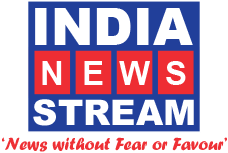

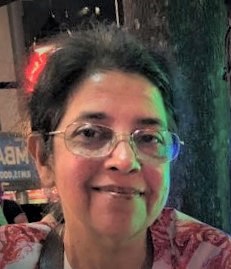 by Nilofar Suhrawardy
by Nilofar Suhrawardy

